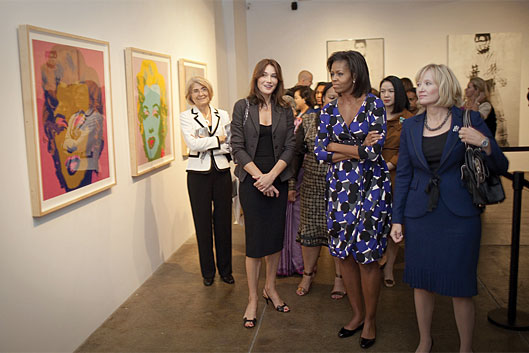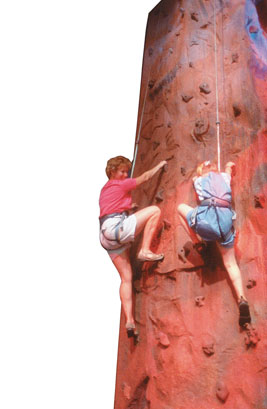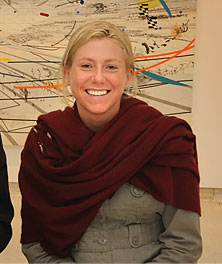 Winter 2009
Winter 2009|
Quite the earful
Talk about an awkward dinner party. Imagine if you couldn’t eat and listen. Three tiny bones, just on the inner side of the eardrum, connect us to the worlds between silence and sound. The hammer (malleus), anvil (incus), and stirrup (stapes) combine to form our middle ear, which, among other things, allows us to chew food without the noise of that chewing drowning out all other sound. In October, Zhe-Xi Luo, a vertebrate paleontologist and mammal expert at Carnegie Museum of Natural History, along with a team of Chinese paleontologists discovered the fossil of a long-nosed, chipmunk-size animal named Maotherium asiaticus that lived in what is now northeastern China and scurried beneath the feet of dominant dinosaurs. What’s remarkable about the animal is its ears, which were half-mammal, half-reptile, which meant that its middle ear bones were partially independent of its jaw bone, allowing for more sensitive hearing. The discovery confirms what researchers have long believed—that this delicate system evolved from the cruder organs of our reptilian ancestors, but in a more complex way than previously thought.  The new Mesozoic mammal Maotherium asiaticus may help scientists explain how human hearing evolved. Illustration: Mark A. Klingler
“For those of us dealing with mammalian evolution, the evolution of the middle ear is a holy grail,” says Luo. “Sensitive hearing made it possible for early mammals to coexist with the dinosaurs; it was really a matter of life and death.” The new fossil, he says, “gives us insight into the complex evolutionary process behind this central mammalian feature.” Welcoming the world, Warhol-style
Andy Warhol’s iconic images of 20th-century leaders—from Jackie Kennedy to Queen Elizabeth II and China’s Mao Zedong—inspired spirited debate about the pairing of politics and pop culture. So it was fitting that the administration that harnessed social networks to organize rock-concert-like campaign rallies chose Andy’s museum to showcase the best of Pittsburgh, and America.  Official White House Photo by lawrence jacksonOn September 25, while President Barack Obama and leaders from 19 other world powers held G-20 Summit meetings at Pittsburgh’s Convention Center, First Lady Michelle Obama hosted spouses on a mini-art crawl, which included a stop at The Warhol for lunch and a tour. The women even tried their hands at one of Andy’s favorite, and most popular, techniques: silkscreen printing, which they did on eco-friendly tote bags. The ladies dined in a fourth-floor gallery with table settings as bright and “Pop” as many of Warhol’s works: electric-blue silk tablecloths, white plates, and 1950s glass goblets. Then they toured the house of Andy with director Tom Sokolowski and curator Eric Shiner.  Highmark SportsWorks®: Bouncing Back Highmark SportsWorks®: Bouncing BackSports enthusiasts get ready—there’s a new game in town. The next generation of Carnegie Science Center’s science-of-sports exhibit, Highmark SportsWorks®, kicks off December 19 in a new facility stocked with sports- and health-related experiences. The 20,000-square-foot building adjacent to the main Science Center facility includes trusty SportsWorks favorites, such as the trampoline and the rock wall. But it also boasts plenty of new hands-on and body-on encounters designed to encourage kids of all ages to think about their health as well as opportunities in health-related careers, using sports as a portal. Visitors will learn about the transfer of energy by bouncing on the new You-Yo, likened to a human yo-yo, and explore healthy lifestyles in Chomp!, a multi-player video game where players “chase down” a nutritious diet. It’s an old favorite made new—don’t miss it! Picturing America
 The country’s artistic heritage—its paintings, sculpture, architecture, fine crafts, and photography—help tell its story. And now a program from the National Endowment for the Humanities, Picturing America, is using art as a catalyst to help American students learn about their country’s cultural, political, and historical highlights. The country’s artistic heritage—its paintings, sculpture, architecture, fine crafts, and photography—help tell its story. And now a program from the National Endowment for the Humanities, Picturing America, is using art as a catalyst to help American students learn about their country’s cultural, political, and historical highlights. The program, designed for K-12 students, brings high-quality reproductions of notable American art into public and private schools, libraries, and communities, including Pittsburgh Public Schools, among the more than 60,000 participants nationwide. And one of the 40 works chosen for the project is Carnegie Museum of Art’s Portrait of a Boy, created by John Singer Sargent in 1890, on view in the museum’s Scaife Galleries. Portrait of a Boy depicts a young Homer Saint-Gaudens, son of the painter’s friend, sculptor Augustus Saint-Gaudens, and his mother. Sargent’s representation of his subjects deviates from the sentimental portraiture of the time, catching the natural expression and posture of a boy who is not enthused about sitting for the artist. “Carnegie Museum of Art has long believed in the importance of education in, with, and through the arts,” says Marilyn Russell, chair and curator of education. “Sargent’s portrait has been key to our Art and Narrative Writing program and has introduced thousands of Pittsburgh-area students to an important moment in American art and life. We are pleased that it now has a nationwide educational reach.” A teacher’s teacher
 Carnegie Museum of Art educator Jordan Crosby seems to have already mastered the fine art of teaching. In October, Crosby was named Outstanding Museum Educator of the Year by the Pennsylvania Art Education Association. The Pittsburgh native was given the prestigious honor not only for her impact on education but also her ability to bring out the best in others, especially teachers. Carnegie Museum of Art educator Jordan Crosby seems to have already mastered the fine art of teaching. In October, Crosby was named Outstanding Museum Educator of the Year by the Pennsylvania Art Education Association. The Pittsburgh native was given the prestigious honor not only for her impact on education but also her ability to bring out the best in others, especially teachers. “Jordie sets a high standard of commitment and support for art educators,” says Marilyn Russell, chair and curator of education at Carnegie Museum of Art. “She uses innovative ways to promote art’s value and importance in education within the museum, the community, and the art education field. We are incredibly proud of her.” Crosby’s work related to Life on Mars, the 2008 Carnegie International—which engaged school audiences in the museum and on the Web—made a big impact. She helped area teachers use the exhibition to stimulate creativity and critical thinking inside their classrooms and at the museum. Crosby, the museum’s school and teacher programs specialist, has a bachelor’s degree in art history and French from Hamilton College in New York, and a master’s degree in art history from the University of California, Davis. Prior to joining the museum, Crosby taught classes as curator of education at John Natsoulas Gallery in California. On the road with Andy
 In another successful attempt to highlight Andy Warhol’s unwavering relevancy, last fall The Warhol debuted 13 Most Beautiful… Songs for Andy Warhol’s Screen Tests, a performance that combines 13 of Warhol’s film portraits with music by New York City duo Dean Wareham and Britta Phillips. The response has been King of Pop Art- worthy, the performance playing 16 American cities and 10 European venues to date, with several shows slated for Asia and South America in 2010 and no signs of waning interest. In another successful attempt to highlight Andy Warhol’s unwavering relevancy, last fall The Warhol debuted 13 Most Beautiful… Songs for Andy Warhol’s Screen Tests, a performance that combines 13 of Warhol’s film portraits with music by New York City duo Dean Wareham and Britta Phillips. The response has been King of Pop Art- worthy, the performance playing 16 American cities and 10 European venues to date, with several shows slated for Asia and South America in 2010 and no signs of waning interest. “A big part of what we do is interpreting our collection and re-contextualizing it,” says Ben Harrison, The Warhol’s associate curator for performance. “13 Most Beautiful is about portraiture—trying to capture the essence of a person, with the music pulling out another nuance that you might not have otherwise felt.” Last February’s release of the 13 Most Beautiful DVD, which includes biographies of all 13 Screen Test subjects, represents another momentous step for The Warhol as a curator of new consumable artwork. |
Also in this issue:
The Art of Daily Life · Putting the Popular in Science · Welcome · Clearing a New Path · Directors' Note · Face Time: Lynn Zelevansky · Field Trip: For the Birds · Artistic License: Break-Out Performance · About Town: Social Science · Science & Nature: The Lord of the Flies · Big Picture
 |
Copyright © 2017 CARNEGIE Magazine. All rights reserved. |
